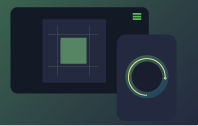Building and Running

Qt Creator supports running and deploying Qt applications that you build for different target platforms or with different compilers, debuggers, or Qt versions. Kits define the tools, device type and other settings to use when building and running your project.
- Validating with Target Hardware
You can use the QML live preview to preview a QML file or an entire Qt Quick application on the desktop, as well as on Android and embedded Linux devices. The changes you make to the UI are instantly visible to you in the preview.
- Building for Multiple Platforms
Build configurations have everything you need to compile the sources into binaries. Build configurations use the tools and settings defined in their corresponding kit.
- Running on Multiple Platforms
Run configurations start the application in the location where it was copied by the deploy configuration. By default, when you select the Run function, Qt Creator builds the project, deploys it to the device defined in the kit, and runs it there. However, if you have not made any changes to the project since you last built and deployed it, Qt Creator simply runs it again.
- Deploying to Devices
Deploy configurations handle the packaging and copying of the necessary files to a location you want to run the executable at. The files can be copied to a location in the file system of the development PC or a device.
- Connecting Devices
When you install tool chains for device types as part of a Qt distribution, the build and run settings for the devices might be set up automatically. However, you might need to install and configure some additional software on the devices to be able to connect to them from the development PC.
Related Topics
- Customizing the Build Process
By default, running an application also builds it and deploys it to a location from where it can be run on the device. You can change the relationship between the build, run, and deploy configurations.
© 2023 The Qt Company Ltd. Documentation contributions included herein are the copyrights of their respective owners. The documentation provided herein is licensed under the terms of the GNU Free Documentation License version 1.3 as published by the Free Software Foundation. Qt and respective logos are trademarks of The Qt Company Ltd in Finland and/or other countries worldwide. All other trademarks are property of their respective owners.